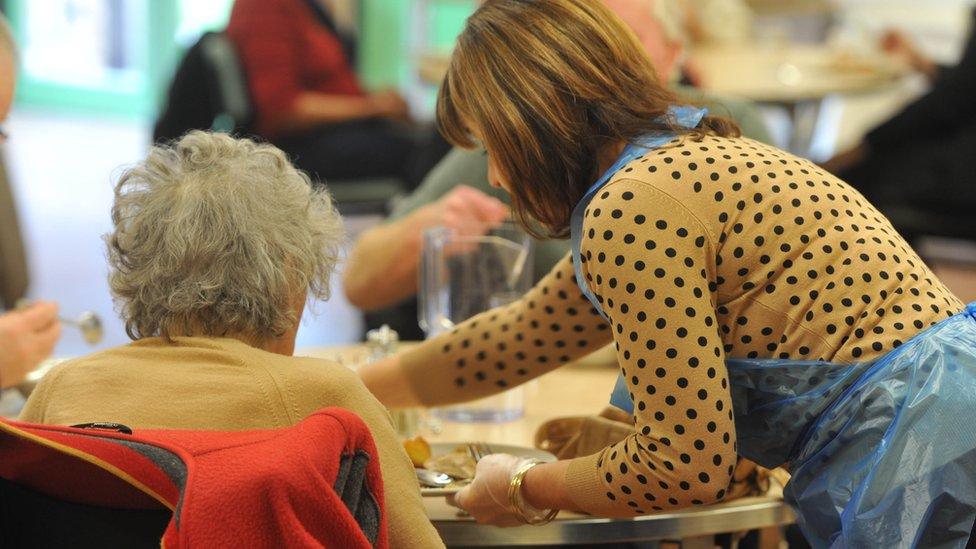Quarter of UK care homes 'at risk of closure'
- Published

On average care homes make Β£17,647 in profit before tax, the research found
More than a quarter of care homes in the UK are in danger of going out of business within three years, figures obtained by Βι¶ΉΤΌΕΔ Radio Four suggest.
About 5,000 homes are at risk of closure because they carry too much debt and do not make enough profit to cover loan repayments.
On average, care homes make Β£17,647 in profit before tax, the research found.
The Department of Health said it was working to make sure care providers had "strong contingency plans".
'Very small pot'
The research, carried out for Radio 4's You and Yours programme by business risk analysts, found individual care homes were borrowing about 61% of the value of the business on average - a figure that amounted to Β£4bn across the industry.
There are 20,000 care homes in the UK, which are operated by 5,871 individual owners who make, on average, about Β£60,000 profit as operators.
Business risk adviser Nick Hood, from Opus Business Services, said the figures made investment difficult.
He added: "It leaves a very small pot to encourage people to stay in this market and run care homes and to invest in them and to create the extra capacity that we all know this market is going to need as the baby boomers get old and need to go into care."
Much of the funding for care homes comes from private equity firms and US real estate companies, but You and Yours reporter Samantha Fenwick - who looked at the issue for the programme - said there was concern these investors would want big and quick returns on their investments.
She said the profitability of care homes had also been hit by rising costs, including the new national living wage of Β£7.20.
John Strowbridge, managing director of Avery Health Care Group, which operates 47 care homes across England, said the new living wage was costing it an additional Β£2m a year.
He also said the fees provided to operators to care for local authority residents were often not enough to match care costs.
Mr Strowbridge added: "And if it continues, as it will do with the national living wage into next year and the year after, the number of local authority clients that care homes can admit across the country, not just Northamptonshire, will continue to be reduced in everybody's care homes, because you just cannot afford to take local authority clients anymore."
'Challenging market'
Nadra Ahmed, chairwoman of the National Care Association, which represents care providers, said: "What we're actually finding is we are in that very difficult situation where responsible providers are going to think to themselves, 'I can't do this very well, I may as well come out of it' and I think that's the worry that we have."
The Department of Health said it recognised some care providers were "finding the current market challenging".
A spokeswoman said: "No-one will be left without care if a home closes.
"Following the failure of , we empowered the Care Quality Commission [independent regulator for England] to monitor the finances of the largest care providers and to provide early warning of likely insolvencies so we can better protect vulnerable people who use their services."
There will be more on this story on You and Yours at 12:15 BST on Wednesday on
- Published19 November 2015
- Published23 September 2015